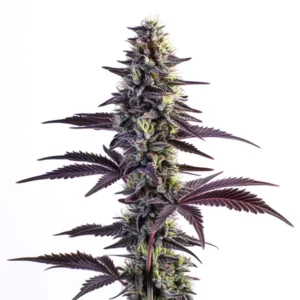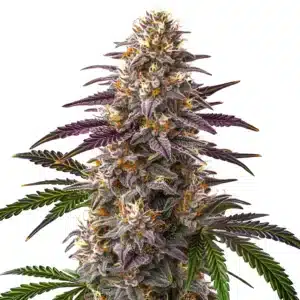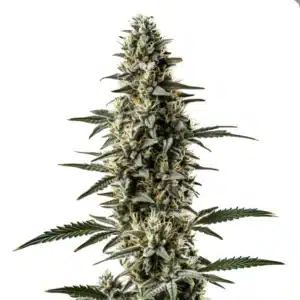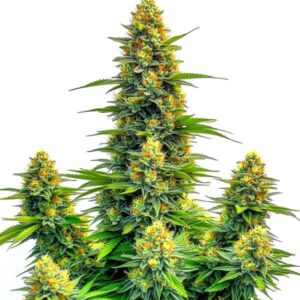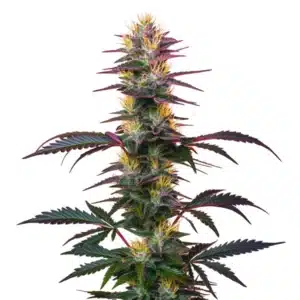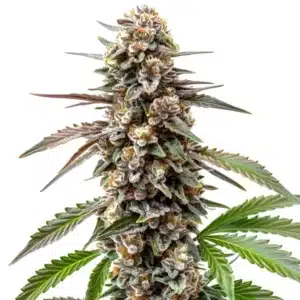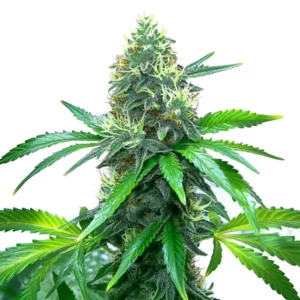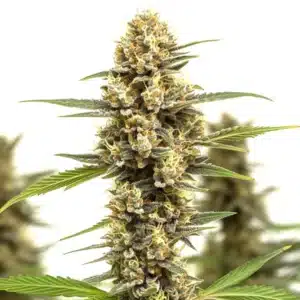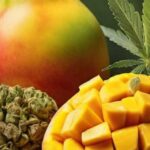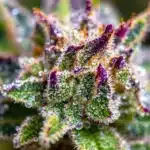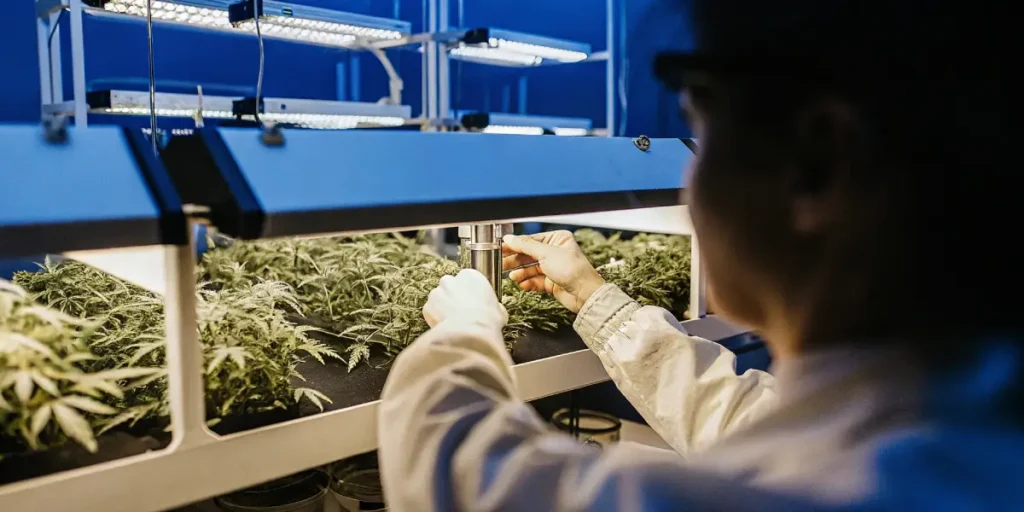
Cannabinoid Yield Improvement Methods
Boosting the cannabinoid yield in your cannabis plants involves a mix of science and art. Every grower, whether a newbie or a seasoned pro, can benefit from maximizing output. Let’s dig into some useful cannabinoid yield improvement methods. The focus here will be on practical tips and techniques that you can implement right away.
One key technique is optimizing your growing conditions. This includes fine-tuning aspects like light, temperature, and humidity. A perfect balance encourages the plant to produce more cannabinoids. For instance, strains like Grapefruit from Blimburn Seeds thrive in well-controlled environments, making them great candidates for those aiming to improve cannabinoid content.
Recommended Strains
Blue Grape Fuel
|
|
THC | 24% - 26% (High) |
|
|
Type | Feminized |
|
|
Yield | High |
|
|
Phenotype | 50% Indica / 50% Sativa |
Bruce Banner x Grape
|
|
THC | 15% - 20% (Medium) |
|
|
Type | Feminized |
|
|
Yield | High |
|
|
Phenotype | 45% Indica / 55% Sativa |
Another method is choosing the right cannabis strain. Genetics play a crucial role in cannabinoid yield. Different strains have varying capabilities for cannabinoid production. Selecting a high-yield strain like Blackberry Gum can set you on the right path to maximizing your output. With the right conditions and strain, you’re halfway to success.
Optimizing Growth Conditions
Temperature and light are two factors that can significantly impact cannabinoid yield. Cannabis plants generally flourish in temperatures between 68-77°F (20-25°C). Maintaining this range encourages robust growth and cannabinoid development. Additionally, proper lighting mimics natural sunlight, which is essential for photosynthesis.
Cannabis requires around 18 hours of light during the vegetative stage and 12 hours during the flowering stage. Using LED lights not only saves energy but also provides a full spectrum of light, which can enhance cannabinoid extraction efficiency techniques. Remember, the right environment is a cornerstone of advanced methods for increasing cannabinoid yield.
Humidity control is another crucial aspect of optimizing growth conditions. Keeping humidity levels between 40-60% during different growth stages helps in preventing mold and pests, which can negatively affect cannabinoid yield. Consistent monitoring and adjusting of humidity can greatly contribute to maximizing cannabinoid output in cannabis cultivation.
Air circulation also plays an important role in creating an ideal growing environment. Proper airflow prevents hot spots and helps in even distribution of CO2, which is vital for photosynthesis. Using oscillating fans can improve air movement, ensuring plants have the best chance to flourish and increase cannabinoid production.
Soil and Nutrients
Quality soil enriched with the right nutrients is crucial for improving cannabinoid content in hemp plants. Cannabis thrives in slightly acidic soil with a pH of around 6.0. Using organic fertilizers can boost plant health and cannabinoid production. Think of soil as the foundation; a strong base leads to a bountiful harvest.
Consider adding supplements like calcium and magnesium to your nutrient mix. These elements strengthen plant structure and improve the plant’s ability to absorb other nutrients. Also, keep in mind that over-fertilizing can harm plants, so always follow recommended guidelines.
Rotating crops and using cover crops can enhance soil quality over time. These practices improve soil structure, increase nutrient availability, and promote microbial activity, all of which are beneficial for optimizing cannabinoid production processes. Healthy soil is a key factor in achieving higher yields and better cannabinoid profiles.
Composting is another effective method to enrich soil. By recycling plant waste and organic matter, you can create nutrient-rich compost that boosts soil fertility and supports sustainable growing practices. This natural approach aligns well with advanced methods for increasing cannabinoid yield.
Watering Techniques
Proper watering is fundamental to any successful grow. Overwatering can lead to root rot, while underwatering stresses the plant, reducing cannabinoid production. A good rule of thumb is to water when the top inch of soil feels dry to the touch.
Using drip irrigation systems can help maintain consistent moisture levels. This technique ensures that water reaches the roots without drowning the plant. It’s efficient and reduces water waste, making it a sustainable option for growers.
Water quality is also an important factor in cannabinoid yield improvement methods. Using filtered or distilled water can prevent the introduction of unwanted chemicals and minerals that might interfere with nutrient absorption and plant health. Clean water contributes to robust growth and higher cannabinoid output.
Monitoring water pH is essential to ensure optimal nutrient uptake. Keeping the pH levels between 6.0 and 7.0 allows for better absorption of nutrients, ultimately supporting the plant’s ability to produce cannabinoids. Regularly testing and adjusting water pH can lead to significant improvements in yield.
Promos & Deals
Choosing the Right Strain
Genetics are crucial when it comes to cannabinoid yield improvement methods. Some strains are naturally predisposed to higher cannabinoid production. Choosing strains like White Widow from Blimburn Seeds can give you a head start in your quest for higher yields.
Research is key to selecting the right strain. Consider factors such as climate adaptability, cannabinoid profile, and growth characteristics. Strains that are resilient to your specific growing conditions will naturally produce more cannabinoids.
Understanding the cannabinoid profile of a strain can help in tailoring your growing techniques to maximize specific compounds like THC or CBD. This knowledge is pivotal in optimizing cannabinoid production processes and achieving desired potency levels in your harvest.
Some strains are better suited for indoor growing, while others thrive outdoors. Matching the growing environment to the strain’s natural inclinations can lead to better yields and improved cannabinoid content. This strategic alignment is part of advanced methods for increasing cannabinoid yield.
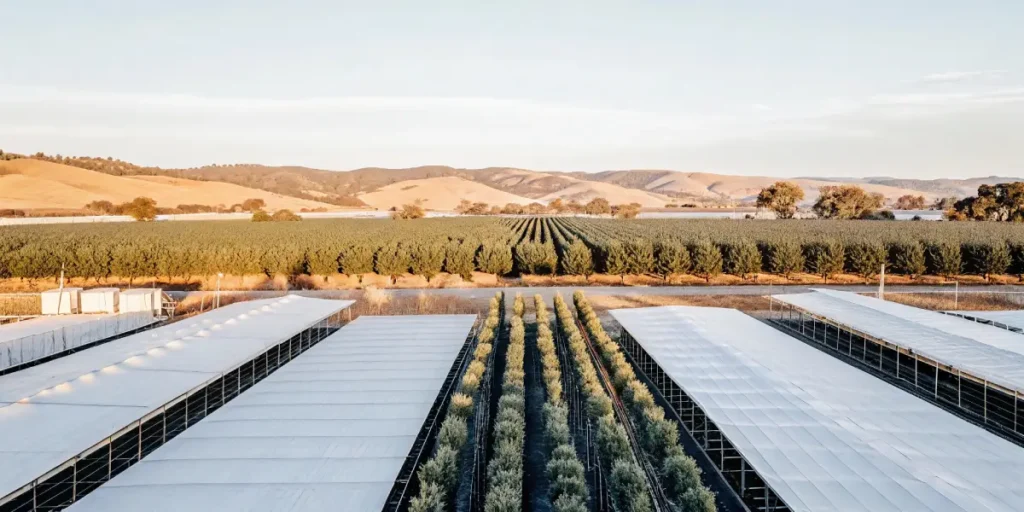
Harvest Timing
The timing of your harvest can significantly influence cannabinoid levels. Harvesting too early or too late can result in lower cannabinoid content. Trichomes—the tiny resin glands on the plant—are a good indicator of harvest time.
When trichomes are mostly cloudy with a few amber tips, it’s usually the perfect time to harvest for maximum potency. This stage indicates peak cannabinoid levels, especially THC and CBD. Waiting for the right moment is crucial for optimizing cannabinoid production processes.
Environmental factors such as temperature and humidity leading up to harvest can also affect cannabinoid levels. Gradually reducing humidity and maintaining optimal temperatures can help preserve cannabinoid integrity and enhance the overall quality of the harvest.
Utilizing drying and curing techniques post-harvest is essential for maximizing cannabinoid output in cannabis cultivation. Proper drying prevents mold, while curing enhances flavor and potency by allowing cannabinoids to mature fully. These steps are crucial for a successful harvest.
Training Techniques
Training techniques like topping and low-stress training (LST) can improve yield by promoting better light penetration and airflow. Topping involves cutting the main stem to encourage the plant to grow multiple colas, increasing potential bud sites.
LST involves gently bending and tying down branches to spread out the plant’s canopy. This allows more light to reach lower parts of the plant, enhancing overall growth and cannabinoid production. Both methods require care but can significantly boost yield.
Screen of Green (ScrOG) is another effective training technique used to maximize canopy exposure to light. By using a screen to guide plant growth, ScrOG ensures that each bud site receives adequate light, boosting cannabinoid production and overall yield.
Main-lining, a combination of topping and LST, creates a symmetrical plant structure that optimizes light exposure and nutrient distribution. This advanced technique is part of cannabinoid yield improvement methods that can lead to larger, more potent harvests.
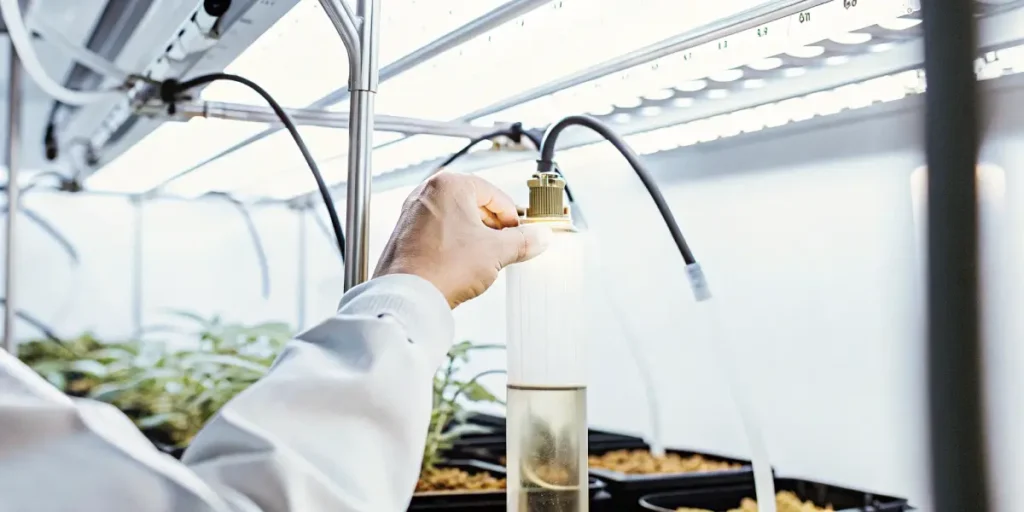
FAQs
What are cannabinoid yield improvement methods?
Cannabinoid yield improvement methods encompass a variety of techniques aimed at increasing the production of cannabinoids in cannabis plants. These methods include optimizing environmental conditions, selecting high-yield strains, and employing advanced growing techniques.
By focusing on these strategies, growers can enhance both the quantity and quality of cannabinoids produced. This is crucial for achieving potent, high-yield harvests that meet both personal and commercial needs.
Implementing these methods requires understanding the specific needs of each plant and adapting to changing conditions. This dynamic approach ensures that you are always optimizing cannabinoid production processes for the best possible results.
Experimentation and continuous learning are part of the process. Each grow offers new insights that can be applied to future crops, resulting in ongoing improvements in cannabinoid yield and quality.
How can I improve soil quality for better cannabinoid yield?
Improving soil quality involves choosing the right type of soil and enriching it with essential nutrients. Cannabis plants thrive in well-draining soil with a pH balance around 6.0. Organic fertilizers and supplements like calcium and magnesium can further enhance soil quality.
Regular soil testing helps maintain the right balance of nutrients, ensuring optimal conditions for plant growth. By investing time in soil health, you set a strong foundation for higher cannabinoid yields.
Soil amendments such as perlite or vermiculite can improve aeration and drainage, crucial for the root health of cannabis plants. These additions help in creating an environment conducive to optimizing cannabinoid production processes.
Using beneficial microbes in the soil can enhance nutrient availability and promote plant health. These microbes work symbiotically with plant roots, aiding in nutrient absorption and contributing to higher cannabinoid output.
Why is strain selection important for cannabinoid yield?
Strain selection is crucial because different strains have varying capabilities for cannabinoid production. Genetics play a significant role in determining a plant’s yield potential. Selecting high-yield strains like those available from Blimburn Seeds can greatly influence your harvest outcome.
Researching and choosing strains suited to your growing conditions can enhance both yield and cannabinoid content. This strategic choice is a fundamental step in optimizing cannabinoid production processes.
Strains with higher resistance to pests and diseases can also be advantageous, as they require fewer resources to maintain, allowing more energy to be directed towards cannabinoid production. This resilience can lead to more consistent and higher yields.
Considering the end-use of the cannabis can guide strain selection. Whether for recreational or medicinal purposes, choosing strains with specific cannabinoid profiles ensures that the final product meets the desired needs and expectations.
What is the role of light in cannabinoid yield improvement?
Light plays a vital role in the photosynthesis process, which is crucial for plant growth and cannabinoid production. Proper lighting conditions can significantly boost yield by enhancing the plant’s ability to produce energy.
Using full-spectrum LED lights can mimic natural sunlight, providing the necessary wavelengths for optimal growth. Adjusting light schedules according to the plant’s stage of growth also helps in maximizing cannabinoid output.
Light intensity is another factor to consider in cannabinoid yield improvement methods. Too much light can cause stress and hinder growth, while too little light can slow down cannabinoid production. Finding the right balance is key to achieving high yields.
Light distance from the plant canopy should be monitored and adjusted throughout the growing cycle. Keeping lights at an optimal distance prevents burning and ensures even light distribution, further supporting advanced methods for increasing cannabinoid yield.
How does harvest timing affect cannabinoid levels?
Harvest timing is critical for maximizing cannabinoid levels. Trichomes, the resinous glands on the plant, indicate the perfect time for harvest. Harvesting when trichomes are mostly cloudy with some amber tips ensures peak cannabinoid potency.
Rushing the harvest can result in lower cannabinoid content, while waiting too long can degrade the cannabinoids. Monitoring trichomes closely with a magnifying glass can guide you to the optimal harvest time, ensuring a potent and high-yield crop.
Pre-harvest flushing is a technique used to enhance the flavor and quality of cannabis by removing excess nutrients from the plant. This process can also positively impact cannabinoid profiles, contributing to a cleaner and more potent final product.
Environmental conditions during the final weeks of flowering can influence cannabinoid development. Gradually reducing nutrients and adjusting light and temperature can help in optimizing cannabinoid production processes leading up to harvest.


